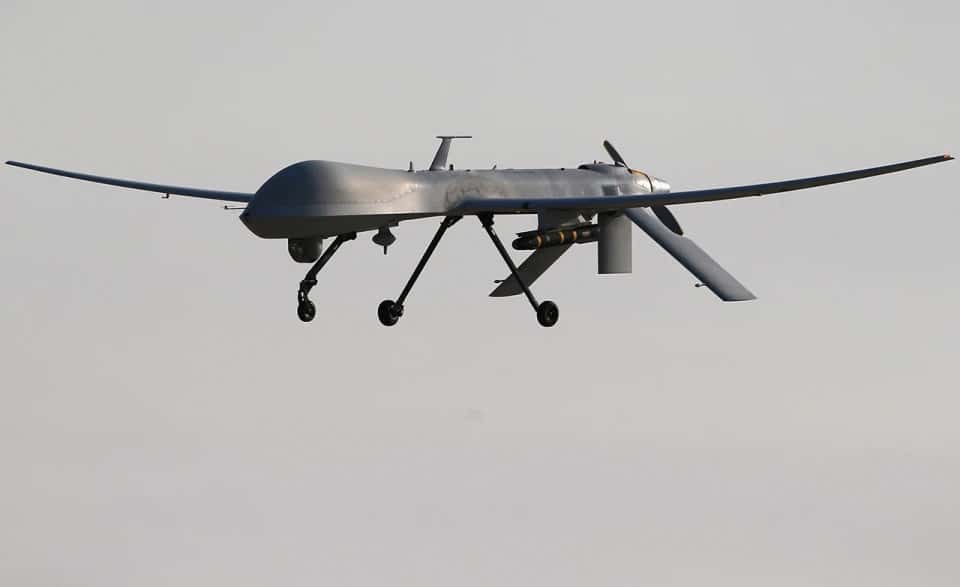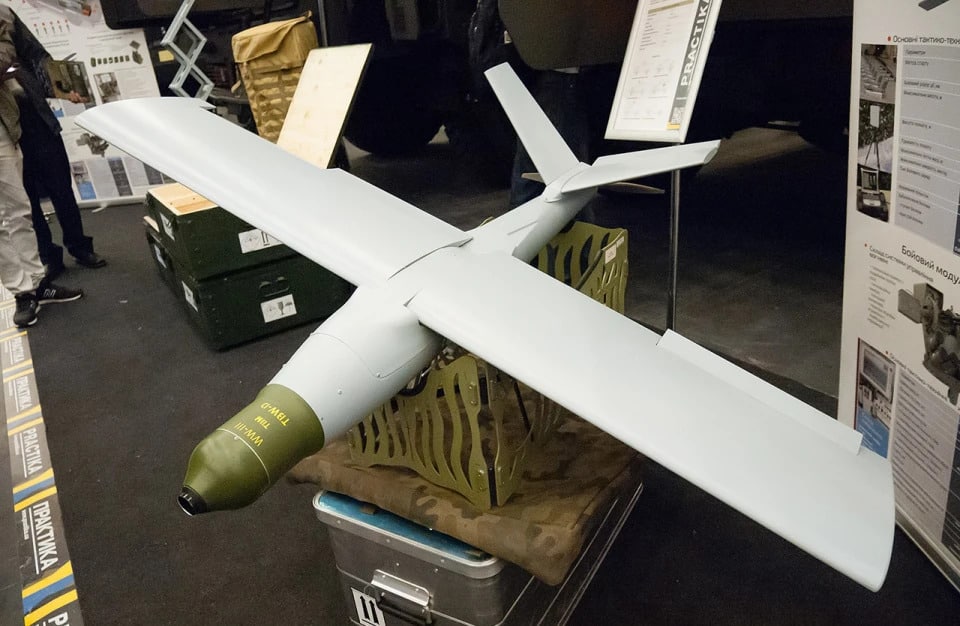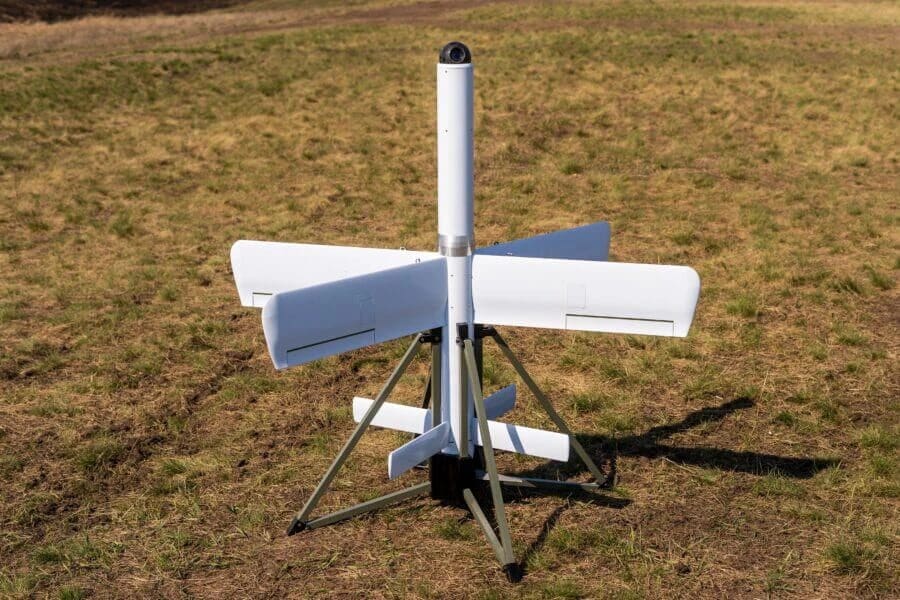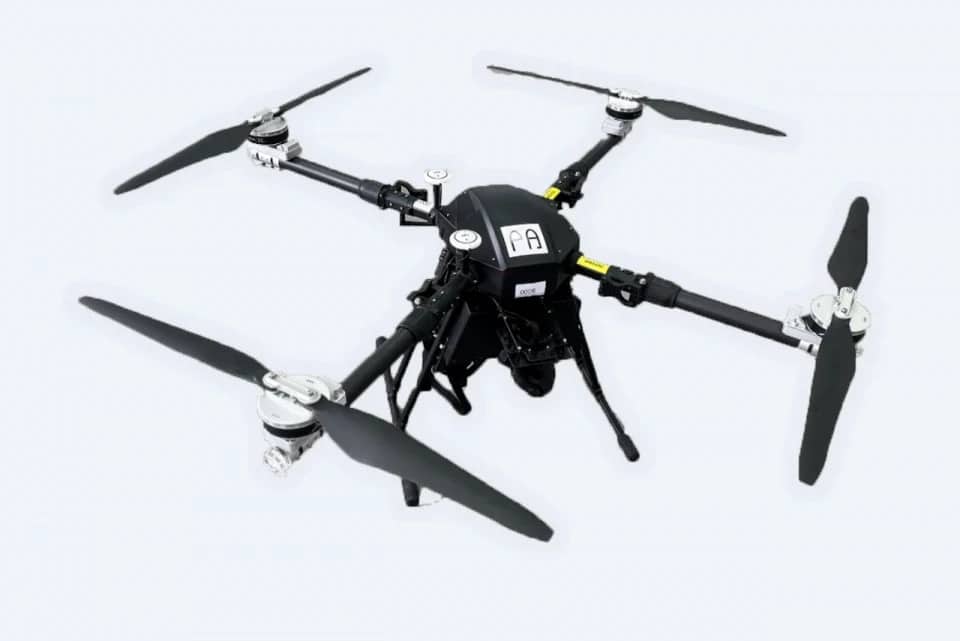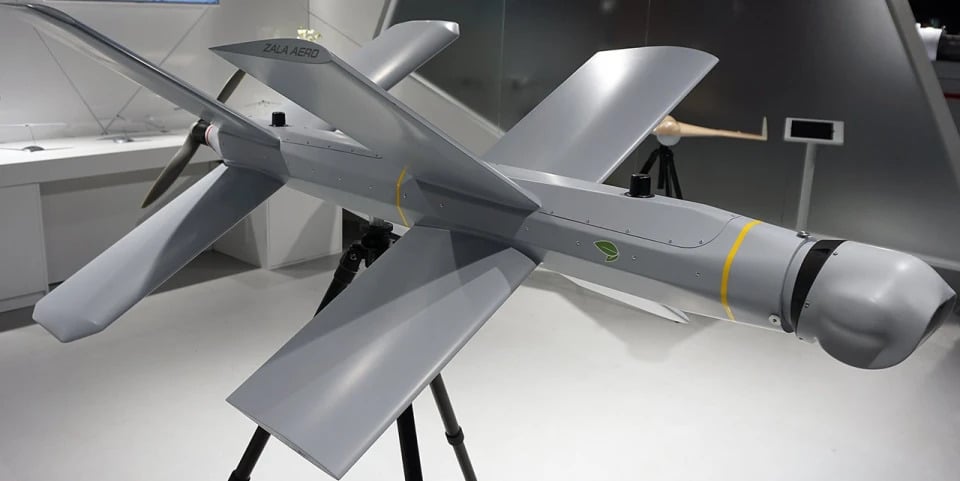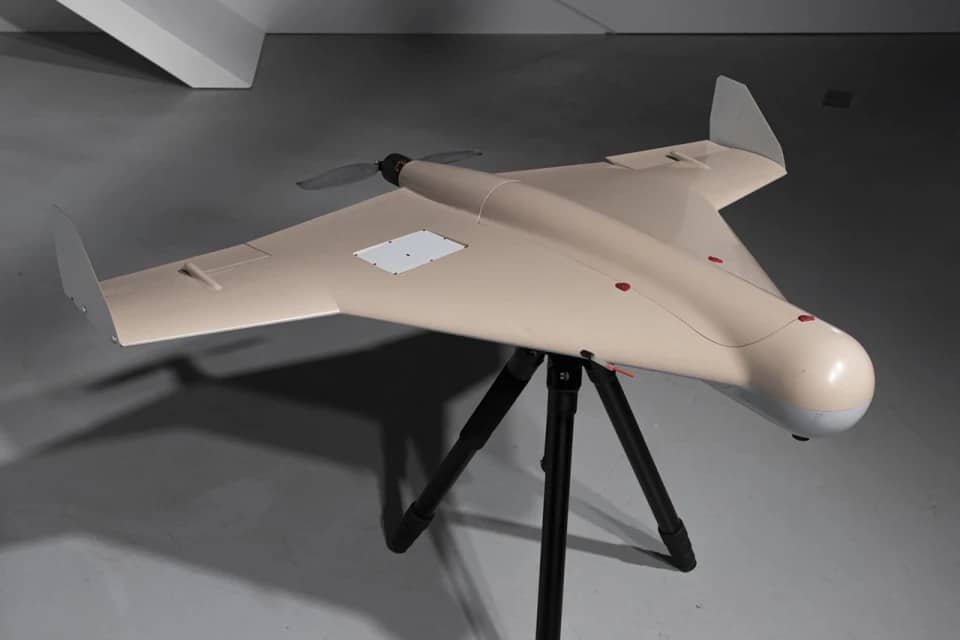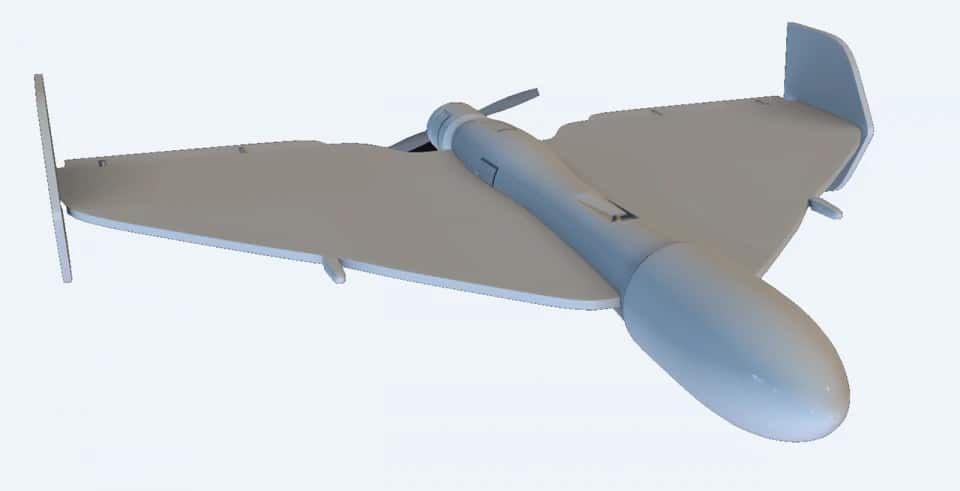- What are kamikaze drones?
- Switchblade drones
- Phoenix Ghost drones
- Warmate kamikaze drones
- Ukrainian kamikaze drones
- FPV drones
- Pegasus drone
- Russian kamikaze drone Lancet
- Cub-UAV
- Iranian UAV Shahed
- How to protect yourself during drone attacks
Last year, terms like “shahed” or “moped” became part of every Ukrainian’s lexicon. Today, kamikaze drones have become a common occurrence both on the frontline and far behind it in the Russian-Ukrainian war.
Espreso (Ukrainian media outlet) presents information about kamikaze drones used in the conflict, their types, technical specifications, and explains how one can better protect themselves from them.
What are kamikaze drones?
Kamikaze drones are also known as loitering munitions. These are unmanned aerial vehicles with an integrated explosive payload. They can remain in the air near a target for an extended period, awaiting commands from an operator. After receiving the appropriate command, they swiftly attack or carry out tasks according to pre-programmed algorithms.
Kamikaze drones occupy a niche between cruise missiles and unmanned aerial vehicles, sharing characteristics with both. They differ from cruise missiles in their ability to loiter around the target area for a relatively extended period and from conventional UAVs in having an integrated explosive payload. They are referred to as unconventional long-range weapons.
The concept of creating loitering munitions emerged in the late 1970s, and the first prototypes of these weapons were introduced in the 1980s.
Ukraine utilizes 9 models of kamikaze drones. The Ministry of Defense has reported 3 UAVs of aircraft type and 6 models of FPV drones.
Switchblade drones
The United States announced the transfer of Switchblade drones to Ukraine just a month after the full-scale Russian invasion. The name of the drone translates to “knife with a retractable blade.” The US had only supplied these drones to the United Kingdom before providing them to Ukraine. They are relatively inexpensive but are highly resilient due to their compact size, high speed, and silent flight. There are two types of these drones: the lightweight Switchblade 300 and the heavy Switchblade 600.
Source: Getty Images
Switchblade 300 is used for the destruction of light armored vehicles and enemy personnel. The kamikaze drone is 61 cm long and weighs only 2.7 kg, making it easy for a single soldier to carry. In its light version, this kamikaze drone can cover distances of up to 10 km and stay in the air for 10 minutes, as explained by Defense Express. Targets can be destroyed both “online,” with the operator controlling the drone from a tablet, and by pre-programming destruction using coordinates. The warhead carries an explosive charge equivalent to a 40-mm grenade. Interestingly, if needed, the operator can change the target by canceling the previous attack. Switchblade 300 is silent due to its electric motor and can reach speeds of up to 160 km/h.
Later, in September 2022, the US Department of Defense ordered Switchblade 600 for the needs of the Armed Forces of Ukraine. By spring 2023, the heavy Switchblade drones were already being used on the frontline. Switchblade 600 is significantly heavier than the “300” model, weighing 23 kg. However, it is still portable and can be set up within 10 minutes. It is designed for flights up to a distance of 40 km, which it can cover in 20 minutes. After that, it can loiter in the air for an additional 20 minutes. The attack speed reaches 185 km/h, and the “600” model is used to target armored vehicles.
Switchblade 600 can be mounted on a ground transport platform with six sets or launched from the air, making it suitable for air-to-surface missions. The “600” can be equipped with an anti-tank warhead, providing greater range and a lower cost compared to anti-tank missiles like Javelins. The control system, operated through a tablet with a touchscreen interface, allows manual or autonomous flight control. It employs encrypted data transmission channels and is equipped with electronic interception protection.
Phoenix Ghost drones
The Phoenix Ghost is a tactical drone designed for warfare in flat terrains, making it well-suited for use, for example, in the Donbas region. The system was developed in the United States, and this drone is similar to the Switchblade. It can be utilized for obtaining terrain images, but its primary purpose remains the attack on the enemy. The Phoenix Ghost can take off vertically and fly for over six hours. It is effective against medium-armored ground targets and is suitable for nighttime use.
Evidently, these drones were used, for instance, in the destruction of Russian anti-aircraft missile systems such as the TOR M2 and S-300VM during the spring of this year. An important aspect that distinguishes this drone from others, as noted by military experts, is its large attack angles, which are beyond the reach of the majority of kamikaze drones that follow steep flight trajectories.
Phoenix Ghost remains an extremely secretive project, with no mention of it even on the website of the developer company, Aevex Aerospace. Most likely, the “Ghost” was designed as a means for “hunting big game” – specifically, enemy anti-aircraft missile systems.
Warmate kamikaze drones
This kamikaze drone (its name derived from War Mate) was developed by the Polish company WB Electronics. It is launched pneumatically from a container launch system and features an electric motor and folding wings. The operational range is 10 km, and it can loiter in the air for up to half an hour. The normal flight altitude ranges from 30 to 200 meters, with a maximum altitude of 500 meters. Warmate can reach a top speed of 150 km/h. The drone can have a maximum takeoff weight of 4 kg, carrying up to 800 grams of explosives.
Source: Wikipedia
The Warmate has an automatic flight control mode and a return system in case of failure. During the attack, the drone dives at the target, reaching its maximum speed of 150 km/h. The attack is guided by the operator using appropriate optics. The operator can cancel the mission during an attack maneuver and return Warmate to the base.
There are three configurations of Warmate: portable, mobile (mounted on an automotive chassis), and reinforced — based on a specialized armored vehicle. The reinforced variant includes a crew of 5 people and comprises a ground control station, 12 UAVs, 24 warheads, a compressor, high-pressure cylinder, 2 catapults, an electric power unit, and a retractable antenna mast.
Ukrainian kamikaze drones
Among the domestic kamikaze drones, the RAM II UAV deserves mention. Ukrainians were able to raise hundreds of millions of hryvnias in a day for such devices. They are based on the Leleka-100 UAV platform. The drone has a range of 30 km and weighs 8 kg (including a 3-4 kg warhead). Deployment time takes 10 minutes, and if the UAV is not destroyed during a mission, it can be reused. RAM II can reach speeds of up to 70 km/h and a maximum altitude of 1000 meters.
The warhead of the RAM II UAV can be of three types: high-explosive, thermobaric, or shaped-charge. The high-explosive warhead is designed to target enemy personnel in the open, and with around 150 fragments, it can neutralize personnel within a 15×3 m area. The armor-piercing warhead can penetrate armor up to 40 mm thick and is effective against light armored vehicles. The thermobaric warhead is intended to engage targets inside buildings and lightly armored vehicles, being particularly effective against enemy fortifications. The lethal radius of the thermobaric charge extends up to 15 meters in an open area.
The ST-35 Silent Thunder drone is designed for target engagement through self-destruction. The system has a unique launch method using an auxiliary multicopter. The multicopter vertically lifts the munition to an altitude of 500 meters, after which it disconnects and heads towards the target area. Meanwhile, the multicopter rises further to an altitude of approximately 1000 meters and remains in the air, acting as a signal relay, maintaining a stable connection with the loitering munition at a distance of up to 30-40 km.
Source: Athlon Avia
The Silent Thunder cruises at a speed of 120 km/h and can remain airborne for up to an hour, with a range of operation of 30-40 km. The warhead of the drone weighs 3.5 kg.
Additionally, there is information about the Bober kamikaze drones. The first reports about these UAVs surfaced in 2022 when volunteers raised funds for Ukrainian-made attack drones for the Main Intelligence Directorate. On May 30, 2023, these drones were most likely responsible for strikes on Moscow and its outskirts.
FPV drones
The name comes from the English term “First Person View,” which refers to the view from the operator’s perspective. FPV drones represent a new popular type of unmanned aerial vehicles controlled through specialized goggles, hence the name. The FPV mode transmits real-time video from the drone’s camera to the operator’s goggles. The operator sees the surroundings through these special goggles as if they were sitting inside the drone itself, like a pilot. These drones can reach speeds of over 100 km/h.
Source: Espreso
These kamikaze drones are fast, maneuverable, and capable of attacking enemy vehicles, even while they are in motion or entering tight spaces like hatches or narrow windows. Thousands of such drones are produced in Ukraine each month.
Pegasus drone
“Our main drone is the Pegasus. There’s also the Bucephalus variant. It’s a 10-inch drone that can currently lift up to 2 kg. The maximum flight range at which an attack is recorded is 17.4 km,” one of the manufacturers explained.
The equipment is ordered from China and Europe, and then the drones are assembled based on the military’s needs. The cost of such a device is around 300-500 dollars, but it can strike armored vehicles worth millions, even a tank.
“For the kamikaze missions, we use a payload of 1-1.2 kg. The most powerful payload is for tanks. If you properly analyze the tank’s position and identify its weak points, if it’s stationary and not moving, you can hit it,” quoted the drone operator from the 24th Mechanized Brigade.
The Security Service of Ukraine also reported the destruction of the heavy mortar system Solntsepek by a drone.
See also: Lancets: How Russia manufactures kamikaze drones despite sanctions
“It’s more challenging to detect drones than Shaheds because Ukrainians can fly very low (15 meters). With a payload of 1 kg of explosives or striking elements, the flight range is 3-12 km (the most comfortable distance being 3-6 km),” a fighter with the call sign “Gagarin” explained during a televised marathon.
Russian kamikaze drone Lancet
As for Russian kamikaze drones, the most dangerous of them is the Lancet, which was introduced in 2019.
The speed in the air reaches up to 300 km/h, the flight range is up to 40 km, and it can reach an altitude of up to 5 km. The maximum weight of the drone is 12 kg, including an explosive payload of up to 5 kg.
Usually, Lancets operate in pairs with the UAV Orlan-10 — the latter conducts reconnaissance and provides coordinates for the Lancet drones to carry out their attacks. Since the autumn of 2022, Russian propaganda has often disseminated videos showing Lancet drones hitting Ukrainian air defense systems, artillery installations, howitzers, and other targets. However, the warhead of this kamikaze drone is sometimes insufficient to fully destroy or disable the military equipment.
Source: Militarnyi
Ordinary nets stretched at a certain height have proven to be an effective means of defense against Lancet drones. This method of countering drones has been successful on several occasions. However, experts emphasize that while it is possible to fight against Lancets before they lock onto a target, it becomes extremely challenging to neutralize them once they have acquired their target.
Lancet drones are manufactured by Russians themselves, claiming to produce them on a large scale. Russia obtains the components for their production through parallel imports and ineffective sanctions. According to Yuri Kasyanov, the commander of the UAV reconnaissance unit of the Ukrainian Armed Forces, Lancet is made up of 80% Chinese components, as he highlighted in an interview with the BBC.
Cub-UAV
The Cub-UAV drone delivers ammunition to target coordinates manually set or from target payload imaging. The advantages of the system include concealed launch, precision bombing, silence, and ease of use. The drone’s dimensions are 1210×950×165 mm. Cub drone can reach speeds of 80-130 km/h, stay airborne for up to half an hour, and has a payload capacity of 3 kg.
Source: Wikipedia
Iranian UAV Shahed
The most well-known among Ukrainians are the Shahed drones, nicknamed “mopeds” due to their distinctive sound during flight.
In mid-July 2022, a Russian delegation visited Iran, where it was presented with Iranian drones at the Kashan airbase. Subsequently, Western intelligence reported the transfer of hundreds of drones to Russia. Ukrainian President Volodymyr Zelenskyy stated that Russia had ordered 2,400 Shahed drones from Iran.
Among the Iranian drone models, there are Shahed-131 and Shahed-136 kamikaze drones. Shahed-136 (first introduced by Iranians in 2020) is designated by the Russians as Geranium-2. Its effective flight range is likely around 1,000 km (the claimed range is 2,500 km). This UAV can carry a payload of up to 50 kg (with a total weight of 200 kg). The cruising speed of the drone is 180 km/h, and it flies at altitudes ranging from 60 meters to 4 kilometers.
Source: Wikipedia
The Shahed drones are guided to stationary targets using satellite coordinates and are not capable of autonomously locating or attacking moving objects. The target is hit by the warhead in the nose section of the drone. The drone is launched from a launch platform and is powered by an engine to achieve speed and altitude.
This drone can be detected using radar, and it can be destroyed by any means of air defense. Additionally, operating on a piston gasoline engine, the UAV creates significant noise, which helps in its detection and interception. Sometimes, it can be brought down using ordinary firearms.
The modifications of Shahed drones used in Ukraine are specifically designed to cause maximum damage to infrastructure, as reported by CNN. However, Russia actively uses Iranian kamikaze drones for strikes against civilian populations. There are no plans for Russia to stop procuring these “mopeds”. Russians intend to establish production of Shahed drones within their territory.
How to protect yourself during drone attacks
If you hear a sound similar to a moped or chainsaw engine, assess the situation and try to stay away from administrative buildings, strategic, and military facilities.
Find cover and try to wait out the attack there or follow the “two walls” rule.
If you find yourself under attack while outdoors, look for any protrusion, depression in the ground, or ditch. Lie down, cover your head with your hands, and open your mouth.
In buildings, choose a place in the corner and close to an exit to quickly leave the building if projectiles hit.
Stay in cover for at least 10 minutes after the shelling stops. Do not remain in a vehicle during the shelling.
Do not attempt to shoot down the drone with your own weapons within the city limits; this may lead to tragic consequences. Rely on the military and law enforcement.
Originally posted by Dmytro Yavorskyy on Espreso. Translated and edited by the UaPosition – Ukrainian news and analytics website

